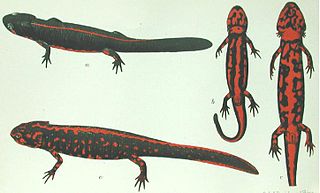 W
WCyprinus yilongensis is an extinct species of ray-finned fish in the family Cyprinidae. It was found only in Yilong Lake, Yunnan, China. It was last seen before 1981, when the lake was drained for 20 days, presumably causing the species' extermination.
 W
WThe existence of elephants in ancient China is attested both by archaeological evidence and by depictions in Chinese artwork. Long thought to belong to an extinct subspecies of the Asian elephant named Elephas maximus rubridens, they lived in Central and Southern China before the 14th century BC. They once occurred as far north as Anyang, Henan in Northern China. The elephant is mentioned in the earliest received texts, including the Shijing, Liji, and Zuozhuan. The oracle bone script and bronzeware script glyphs for elephant are pictographic depictions of an animal with a long trunk. Their modern descendant is the regular script character 象.
 W
WGigantopithecus is an extinct genus of ape from the Early to Middle Pleistocene of southern China, represented by one species, G. blacki. Potential identifications have also been made in Thailand, Vietnam, and Indonesia. The first remains of Gigantopithecus, two third molar teeth, were identified in a drugstore by anthropologist Ralph von Koenigswald in 1935, who subsequently described the ape. In 1956, the first mandible and over 1,000 teeth were found in Liucheng, and numerous more remains have since been found in at least 16 sites. Only teeth and 4 mandibles are known currently, and other skeletal elements were likely consumed by porcupines before they could fossilise. Gigantopithecus was once argued to be a hominin, a member of the human line, but it is now thought to be closely allied with orangutans, classified in the subfamily Ponginae.
 W
WThe Irish elk also called the giant deer or Irish deer, is an extinct species of deer in the genus Megaloceros and is one of the largest deer that ever lived. Its range extended across Eurasia during the Pleistocene, from Ireland to Lake Baikal in Siberia. The most recent remains of the species have been carbon dated to about 7,700 years ago in western Russia.
 W
WThe Northern Sumatran rhinoceros, also known as Chittagong rhinoceros or northern hairy rhinoceros was the most widespread subspecies of Sumatran rhinoceros, as well as the only known subspecies native to mainland Asia.
 W
WThe existence of rhinoceroses in ancient China is attested both by archaeological evidence and by references in ancient Chinese literature. Depictions of rhinoceroses in ancient Chinese art are typically very accurate and lifelike, suggesting that they were modelled first-hand by the artist on living rhinoceroses rather than being based on legend or traveller's tales. The main species of rhinoceros that lived in China in ancient times has been identified as the Sumatran Rhinoceros, more especially the Northern Sumatran rhinoceros although the Indian Rhinoceros and Javan Rhinoceros were also present.
 W
WThe Yunnan lake newt is an extinct species of newt in the family Salamandridae, and was also known as Wolterstorff's newt. It was only found near the Kunming Lake in Yunnan, China. It was found in shallow lake waters and adjacent freshwater habitats. Despite extensive surveys, it has not been seen since 1979, and is therefore considered extinct. The reasons for its extinction are believed to be habitat loss, pollution, and introduced species.